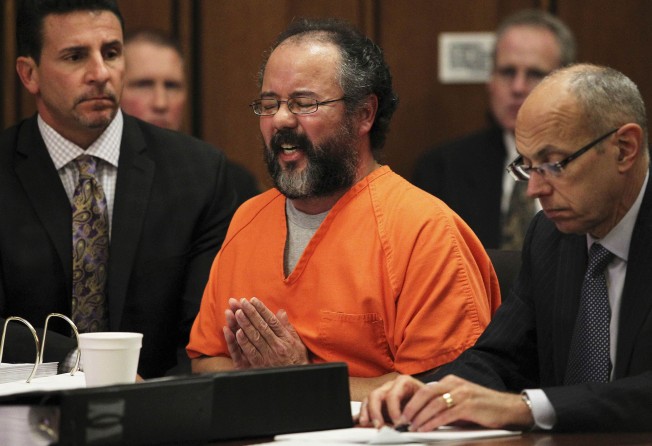
Book review: Hope - memoir of two of the Cleveland hostages


Two teenage girls vanished from their Cleveland neighbourhood over a period of a year. A decade passed. Hope for their survival waned. Then on May 6, 2013, a woman escaped from a house in the neighbourhood and gave the incredible news: she was one of the missing teenagers, now aged 27. Even more incredibly, two other women were locked in the house, and one of them was the other missing teen.
The owner of the house, a former school bus driver, was arrested and convicted. After serving one month of a life sentence plus 1,000 years, he hanged himself in his prison cell.
Hope: A Memoir of Survival in Cleveland tells the story of two of the women's survival, with help from the Pulitzer Prize-winning husband-wife team of Mary Jordan and Kevin Sullivan. The book is an easy read, although not necessarily always an interesting one.
Ariel Castro lured all three of his victims into his vehicle with the offer of a ride. Once the victims were in his vehicle, Castro drove them to his home, chained them, gagged them, raped them repeatedly - up to five times a day - and held them prisoner in the upstairs bedrooms of his unremarkable-looking house.

All three victims were small, no match for Castro, although he was only a paunchy 1.7-metre-tall man. He concealed his prisoners' presence by constantly blasting loud radio music and not allowing anyone onto the second floor of his house.
The women weren't even aware of one another's presence for some time because of the loud music, their isolation from one another, and their inability to move far because of their heavy padlocked chains. Windows were boarded over and covered with curtains; doors were locked only from the outside.
Bathing took place at Castro's whim, and often provided him an opportunity for another rape. The victims weren't allowed to use the toilet, instead having to make use of trash cans in their rooms. Castro fed the women only once a day if that, usually at night, and then usually just cold fast food. Their body weight plummeted. During the winters they suffered cold. During the summers they had no ventilation while temperatures climbed over 30 degrees Celsius.
The first victim, Michelle Knight, became pregnant at least once, but Castro beat her to her miscarry. The second victim, Amanda Berry, was allowed to carry her pregnancy to term. She gave birth in an unfilled plastic swimming pool on a bed.
Castro beat and yelled at the women throughout their captivity. He seemed to enjoy hurting them. He often claimed the sex was consensual and the women were treated well. Sometimes the women contradicted him; other times they kept quiet for fear of more abuse.
The most compelling part of the book is the escape and its aftermath. This is a serviceable blend of memoir and journalism. One does come away with great respect for the women for what they endured.
Hope: A Memoir of Survival in Cleveland by Amanda Berry and Gina DeJesus (Viking Penguin/Random House)
Tribune News Service